Together making a safe workplace
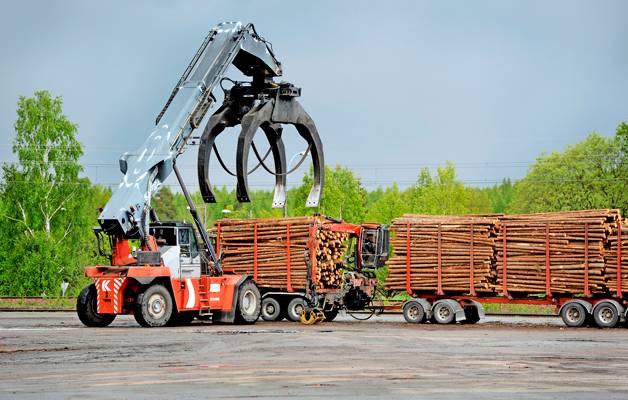
If you want an organization culture that supports collaborative development at your workplace, get the entire personnel to engage in the collaboration already at an early stage. The employees will then commit more readily to common goals, and positive leaps in production and quality improvement will occur as a result. The personnel of Stora Enso’s paper factories located at Anjalankoski are working together to develop an accident-free factory.
The noise of the paper machines in the factory hall of Stora Enso’s paper factory rises up to 85 decibels. When a person steps out of the sound-insulated control room into the factory hall, he needs to wear a helmet equipped with hearing protectors.
Colourful high-visibility work overalls, helmets, hearing protectors, protective goggles, padded garments, protective gloves and footwear are a common sight in the factory.
– The situation was very different in the 1970s. In the old times the workers stuffed cotton wool into their ears, laughs Markku Leinonen, the factory’s occupational safety delegate.
When he started in his post as occupational safety delegate in the mid-1990s, Leinonen set himself an ambitious personal goal.
– I made a promise to myself that when I retire from this job, the safety at this factory must be much better, he remembers.
At the time people laughed at his goal, and no one believed that an accident-free factory could ever be possible. Luckily, attitudes and many things and have moved in a much better direction over the years.
Leinonen is retiring at the end of the year, and the occupational safety culture at the Stora Enso paper factories now seems quite good, though not perfect.
– The change in the safety culture is only just beginning, and we still have a long way to go, he says.

Occupational safety delegate Markku Leinonen and regional manager Ari Johansson are pleased with the positive results obtained with the Accident-free factory programme.
500 safety proposals from the personnel
Typical work accidents in spacious factory environments are: bruised fingers, cut wounds on hands, musculoskeletal injuries caused by slipping, and even forklift accidents.
Some 20 years ago nearly 200 work accidents leading to absence from work happened every year at the Stora Enso factories at Anjalankoski.
Now the situation at the factories is much better. But 28 accidents still took place at the factories in 2014, including those to people working for different contractors. Seven of the accidents led to absence from work.
– Even though safety has improved considerably in the long run, at one stage a few steps back were taken. But at the same time, some of the factory departments have had no accidents in several consecutive years. A few years ago we started to make plans for a comprehensive safety culture for our factories in order to get equally good results in all departments, explains Ari Johansson, regional manager of the Stora Enso factories at Anjalankoski.
The factory management, occupational safety delegate, and occupational safety chief, together with the employees started to think of ways to prevent work accidents in the future.
Over 500 different ideas for improving safety were proposed by the employees. Based on these ideas, a programme called ‘Accident-free factory’ was launched in August 2014.
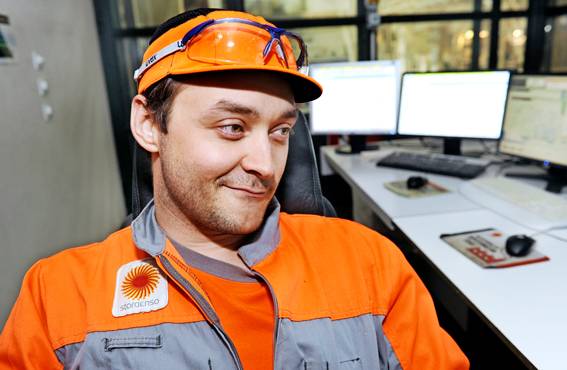
– Safety matters are well taken care of here, and they are discussed openly by both sides. I have had enough training, and I haven’t been in any accidents. So I guess I’ve learned what they’ve been teaching. During the time of Ari Johansson, personal protectors have improved a lot, and they are more easily available than before, says Janne Raunio, process operator.
It’s all about the right attitude
The employees were strongly in favour of the idea, but also some change resistance was encountered.
– At the beginning, some persons who had worked long in the factory believed that an accident-free factory was an impossibility, as over the years they had had seen that accidents did take place, Leinonen says.
He mentions that those who at first had been doubtful, joined in when everyone had the chance to express their own views in open discussions. They felt that also their opinions were heard and appreciated.
– In this way it was easier for the employees to commit to safety and to stop and think how their own actions and behaviour affect safety in their own work environment and that of everyone else, Leinonen says.
Johansson points out that open and frank discussion about safety goals has helped people to understand that being on the same page regarding an accident-free factory is a realistic goal.
– I have faith in people. In the end, it’s the people themselves who decide how they take care of themselves and their workmates. When we do everything safely in our factories, the employees feel better, the customers get better products, and our factories are more productive, he sums up his own leadership philosophy.
The employer is responsible for the safety of the employees at the workplace. The employees have to follow the employer’s instructions and report to their supervisor if they notice any safety hazards in their work or the environment.
– Luckily, the attitude toward safety has changed greatly in recent years. Our ‘Accident-free factory’ programme has moved ahead from goals to actual deeds, and is a part of our daily work, says Leinonen.
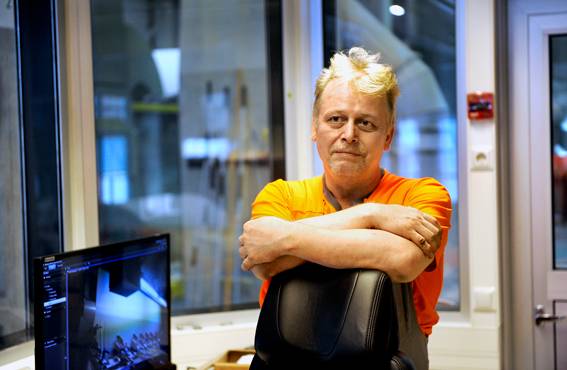
– I always tell new workers to put their hands in their pocket and just walk away rather than try to fix something by themselves. Paper machines are unpredictable, and you can lose your fingers in a second if you don’t know exactly what you’re doing. Safety has improved greatly in the past few years, sometimes this means that the work pace has slowed down. At times I even miss the old days when we could press ahead at full steam! says Jouni Punakivi, paper machine worker.
A three-stage programme
The ‘Accident-free factory’ programme has proceeded in three stages that have created a positive learning cycle. The experiences of the previous stages have provided good insight into what works well and what needs more attention.
During the first stage of the programme (August 2014 to January 2015) the management of the entire factory and all supervisors took part in occupational safety training led by an external consultant. The other parts of the programme have been planned and carried out entirely by the factory’s own resources. In spring 2015, the whole personnel participated in occupational safety coaching led by six of the factory’s employees from six different job categories, who had been trained for this task.
– Persons who were eager to undertake the task and were trusted by the personnel, were selected as coaches. The communication channel was thus open both ways, and the coaches’ motivation to commit to the action models of the new occupational safety culture was strong, says Leinonen.
Each coach held on average a hundred coaching sessions that lasted from two to four hours. The coaches had been trained in technical as well as mental coaching.
– For me, personally, the mental coaching was especially useful when I was coaching white-collar workers. My studies of interaction skills needed for personal contacts helped me to carry through intensive coaching sessions, Leinonen says.
One of the most significant learning experiences for me during the first stage was seeing the high level of motivation and commitment of the employees. They were really eager to be involved in the new safety culture, after their opinions had been heard during the ideation stage of the programme.
– The experiences of the first stage helped us to choose half a dozen target areas on which we focussed in the next stage of the programme, says Johansson.
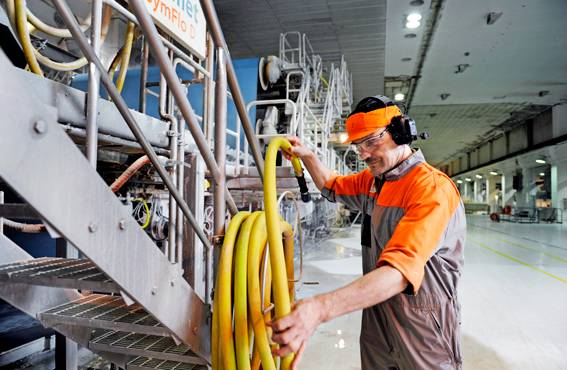
– I have worked in this factory for 38 years. During that time safety matters have changed immensely. We have moved ahead, and the statistics prove it. The biggest improvement is of course the personal protective gear. The safety coaching in connection with the ‘Accident-free factory’ programme has brought safety matters closer to everybody, and has improved attitudes. After work, everyone wants to get home in one piece, says machine operator Jukka Tanska.
Repetition and improving information flow
– I believe in repetition when it comes to improving safety. When you go over things sufficiently many times, they won’t be forgotten and they’ll be adopted more easily. The same rule that applies to top sports, applies to occupational safety too: repetition is the only way to get the best results, says Johansson.
The team coaching was continued in the second stage of the ‘Accident-free factory’ programme.
In addition, the second stage concentrated on providing more work guidance and instructions especially to new employees. Risk assessments were up-dated, and the central rules of occupational safety were posted on the walls of all the factories.
– The second stage (December 2015 to March 2016) was an eye-opening learning experience. We noted that safety information wasn’t always passed on well enough from one work shift to the next. To improve information flow, we decided that the occupational safety personnel’s work needed to be more like coaching, says Johansson.
– Now each work shift has its own safety coach who masters the operation systems of the machines and is better able to discuss work matters with the department supervisors, says Leinonen.
In the second stage, attention was also paid to the significance of the safety hazards, and sub-contractors were instructed and trained in the basic rules of occupational safety.
– The observed safety risks, the 15-minute safety info briefings, and department meetings have demonstrated how effective the coaching has been at each level of the organization. The observations also provide quick feed-back on any need to make changes or otherwise react immediately to safety issues, Johansson adds.
In the third stage of the programme (from last autumn to end of this year) occupational safety representatives have been trained for their new role as occupational safety coaches. Now each work shift has its own safety coach who forms a team with the shift supervisor.
– About 120 persons, or a fifth of all employees, are either coaches or supervisors. This arrangement strengthens awareness of the human factors and risks related to safety, Johansson says.
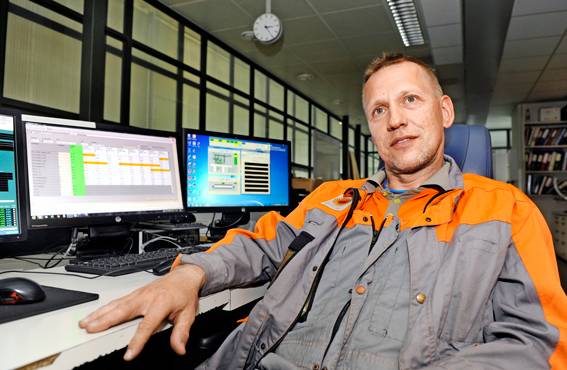
We promote safety by doing our own work safely. We use protective equipment and follow instructions. We don’t rush ahead without thinking. You have to think before you act. And if something comes up in the work process that needs to be improved, we make suggestions, says Jari Pylvänäinen, process operator.
”When actions support the words, and things move forward, good results are obtained.”
Safety do-over at the factory
The concept of an occupational safety coach is an innovation developed at the Anjalankoski paper factories. The concept has aroused interest also at other Stora Enso’s paper factories in Finland.
– We have demonstrated our coaching model at a few other factories, and visitors have also come here to learn about our practices. The practices can’t be copied as such from one factory to another in Finland or abroad, because the work cultures in different factories differ immensely from each other. Cultures are moulded by people. In some other factory there may be more antagonism between the management and the employees. But here we no longer think that the employer is trying to trick us when voluntary cooperation between the employer and employees is being developed, for example in the area of occupational safety, Leinonen describes the work culture of the factories at Anjalankoski.
He gives praise to regional manager Ari Johansson, during whose time a significant do-over in occupational safety matters has been carried out.
– When a person gives all of himself and gets the ball rolling, also others join in. When actions support the words, and things move forward, good results are obtained. Instead of demanding, blaming and shouting, constructive and encouraging feed-back from supervisors motivates employees to work together toward a common goal, Leinonen believes.
Also Johansson emphasizes the significance of positive feedback and encouragement.
– There are no quick prizes in occupational safety – it requires a great deal of effort every day. Now and then a step is taken backwards, but we learn from mistakes. The example of the management, supervisors and occupational safety delegates is decisive in guiding safety culture in the right direction, Johansson says.
In 2016 altogether 18 accidents happened in the entire Anjalankoski factory complex. These included also accidents to employees of the contractors working on the factory premises. Of these accidents, only five led to absence from work. That year the personnel of the paper factory had no accidents leading to absence from work.
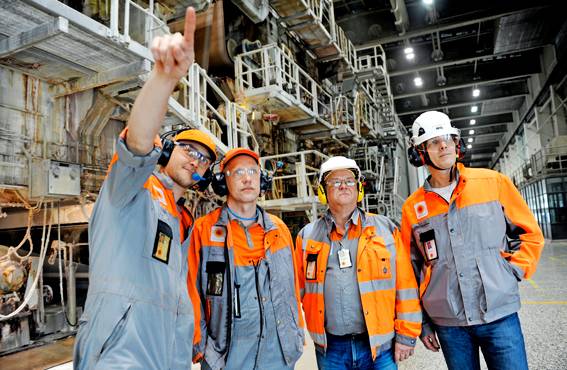
Janne Raunio, Jari Pylvänäinen, Markku Leinonen and Ari Johansson are examining the condition of a paper machine in the factory hall.
Leadership is needed for developing the workplace
More and more enterprises define themselves as specialist organizations whose core competence is the ability to develop together innovative solutions. However, creativity is not only the monopoly of scientists, artists and inventors, as nearly all modern work involves creative thinking in problem-solving. This is true also at the Stora Enso factories at Anjalankoski.
Team work requires interactive skills and mutual respect from all members, so that everyone is motivated and committed to achieving a joint goal. Working together as equals nevertheless demands the right kind of leadership to ensure that the desired results are obtained.
– I came to this conclusion in my doctoral thesis when I studied the ways in which many different specialist teams solved problems. Groups whose members mastered creative ways of working as well as team working skills were most productive in problem-solving. People have different roles in creative work processes. In order to transform ideas into concrete results, someone has to guide and lead the work process, even if the team doesn’t have an official supervisor, says Petro Poutanen, who is a visiting researcher at Aalto University. His doctoral thesis deals with self-directed problem-solving teams.
Essential skills needed for innovativeness in work life are the ability to work together with others and make use of people’s differences with the aid of efficient communication. By utilizing the diversity between people, different ideas and viewpoints meet, and this can lead to something unique. To form a creative team, it is best to get together a group of specialists who all have their own special know-how rather than being experts in the same field.
– The different roles of people are emphasized in creative work. One person may be an eager idea-shooter, another is an efficient implementer, while a third person may be a critical evaluator, and a fourth one may be a diplomat and coordinator who masters human relations and holds the strings in his hands, so that the ideas are refined in the right direction, Poutanen describes.
The pitfalls of creative work
According to Poutanen, the leader’s role in a creative team may vary during the different work stages of the team. At the beginning of the process, the idea-shooters may dominate the process, but as the visions are clarified, the efficient implementers may take the lead.
– It is essential for the sake of motivation and commitment that all members feel they are working toward the same goal, and that they have sufficient freedom as well as responsibility in their work. A micro-managing supervisor who delegates partial tasks quickly suppresses the motivation of a creative person, says Poutanen.
Other risks that he mentions in team work are unrealistically demanding goals or too tight time frames.
– Creativeness in organizations usually means gradual, step-by-step development work rather than radical innovations. Innovative work that is squeezed into a tight time frame tends to concentrate on intensifying the efficiency of existing practices rather than trying to find new more efficient solutions, Poutanen believes.
Poutanen does not believe in the myth of creative geniuses, who are able to save any enterprise that comes their way.
– Even the most creative persons do not automatically guarantee the innovativeness of a group, team, or organization. Team-working skills are needed in order to benefit from the best ideas. Furthermore, innovativeness is not just the prerogative of the research and development department, as also people in for instance administration can be innovative. It is unwise to think that only persons in a certain department or those with a certain job description are creative, he adds.
Creativity is present in everyday life
According to Poutanen, many other myths are related to creativity.
– It is often thought that the best ideas are produced in a positive climate where all ideas are accepted equally. That is a misbelief, as it prevents the convergence of many different thoughts. It becomes difficult for people to elaborate on the ideas of others and evolve them further. Instead, all thoughts are allowed to flourish as such. Healthy critique prunes away unfeasible ideas and focuses on developing feasible ones, Poutanen says.
When the world around you changes, old action models become obsolete. People and organizations are eager for new ideas and innovations, in other words, creativity. Poutanen, together with Nando Malmelin, professor of practice at Aalto University School of Economics, has just published a book ‘Luovuuden idea’ (The idea of creativity). The book describes how creative thinking can be developed and utilized in work life, and what the most recent research tells about the phenomenon of creativity and how it works.
– Creativity is often given a superficial label in innovation discussion, although creativity is present in the every-day interaction between people, Poutanen says.

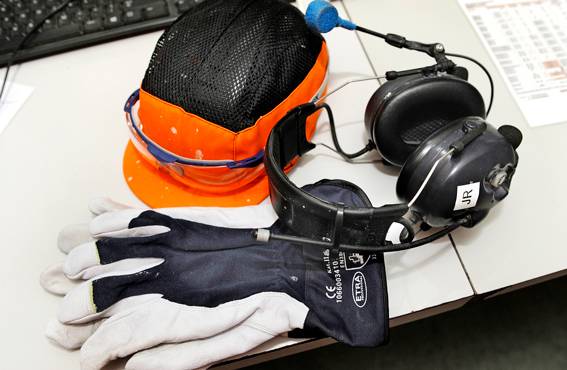

Kommentoi